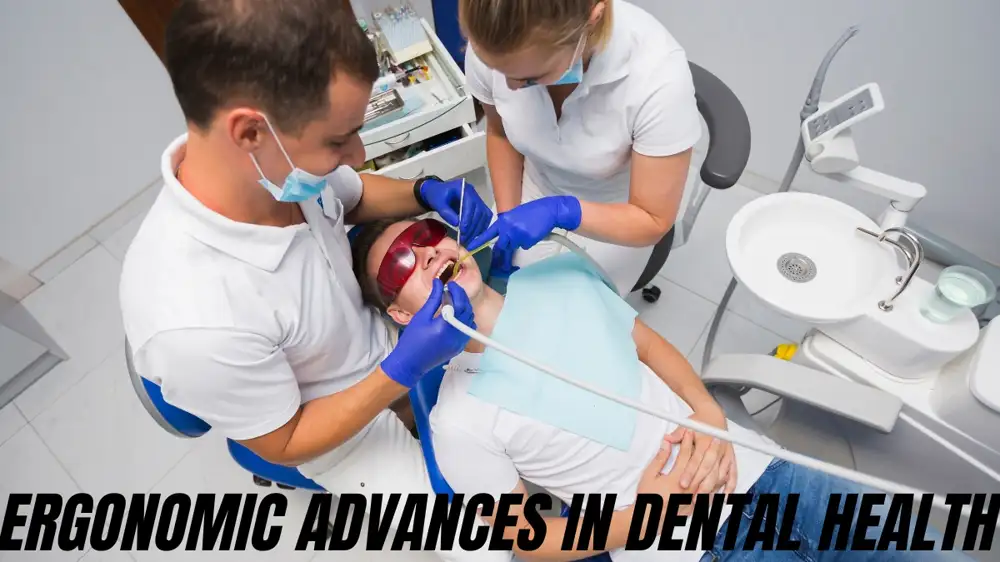Health
Yoga Routines for Back Pain Relief: A Simple Guide to a Stronger, Pain-Free Back

Back pain is one of the most common health complaints worldwide. Aching backs can disrupt daily life, whether it’s from sitting too long, poor posture, stress, or an old injury. While medications and physical therapy help, yoga offers a natural, holistic way to ease discomfort and strengthen your body. This article dives into effective yoga routines for back pain relief, explaining why they work, how to do them safely, and unique tips you won’t find elsewhere. Let’s get started!
Why Yoga Works for Back Pain
Yoga isn’t just stretching—it’s a blend of movement, breathwork, and mindfulness that targets the root causes of back pain. Here’s how it helps:
- Improves Flexibility: Tight muscles (like hamstrings or hip flexors) often pull on the spine, causing pain. Yoga gently lengthens these areas.
- Strengthens Core Muscles: A strong core supports your spine, reducing strain on your back.
- Enhances Posture: Yoga teaches body awareness, helping you sit and stand taller.
- Reduces Stress: Stress tenses muscles, worsening pain. Yoga’s calming effects relax both mind and body.
Research supports this too! A 2020 study in Annals of Internal Medicine found that yoga was as effective as physical therapy for chronic lower back pain.
Essential Yoga Poses for Back Pain Relief
These poses are safe for most people and target common trouble areas. Always move slowly and avoid forcing your body into positions.
1. Cat-Cow Stretch (Marjaryasana-Bitilasana)
Best for: Warming up the spine and relieving stiffness.
- How to do it:
- Start on hands and knees (tabletop position).
- Inhale, arch your back, and lift your chest and tailbone (Cow Pose).
- Exhale, round your spine, tuck your chin (Cat Pose).
- Repeat for 1–2 minutes.
- Why it works: Mobilizes the spine and improves circulation to back muscles.
2. Child’s Pose (Balasana)
Best for: Gentle lower back and shoulder tension relief.
- How to do it:
- Kneel on the floor, big toes touching, knees wide apart.
- Sit back onto your heels and stretch your arms forward.
- Rest your forehead on the mat and hold for 1–3 minutes.
- Why it works: Stretches the lower back and relaxes the nervous system.
3. Downward-Facing Dog (Adho Mukha Svanasana)
Best for: Full-body stretch, especially hamstrings and upper back.
- How to do it:
- From the tabletop position, lift hips up and back, straightening legs (forming an upside-down “V”).
- Press your palms into the mat and relax your neck.
- Hold for 30 seconds to 1 minute.
- Why it works: Decompresses the spine and strengthens shoulders.
4. Sphinx Pose (Salamba Bhujangasana)
Best for: Lower back strengthening and gentle backbend.
- How to do it:
- Lie on your stomach, elbows under shoulders, forearms on the mat.
- Lift your chest slightly, keeping hips grounded.
- Hold for 30 seconds.
- Why it works: Engages the lower back muscles without strain.
5. Thread the Needle (Parsva Balasana)
Best for: Releasing upper back and shoulder tension.
- How to do it:
- Start on hands and knees.
- Slide your right arm under your left arm, lowering your shoulder and ear to the mat.
- Hold for 30 seconds, then switch sides.
- Why it works: Stretches the rotator cuff and mid-back muscles.
6. Bridge Pose (Setu Bandhasana)
Best for: Strengthening the glutes and lower back.
- How to do it:
- Lie on your back, knees bent, feet hip-width apart.
- Press into your feet to lift hips, clasp hands under your back if possible.
- Hold for 30 seconds.
- Why it works: Activates the posterior chain (glutes, hamstrings, lower back).
7. Supine Twist (Supta Matsyendrasana)
Best for: Relieving spinal stiffness and improving mobility.
- How to do it:
- Lie on your back, hug knees to chest.
- Drop both knees to the right, arms out in a “T,” and gaze left.
- Hold 1 minute, then switch sides.
- Why it works: Wrings out tension in the spine and improves rotation.
Customized Yoga Routines for Different Types of Back Pain
Not all back pain is the same! Tailor your routine with these sequences.
Routine 1: Lower Back Pain Relief
- Cat-Cow Stretch (2 minutes)
- Child’s Pose (2 minutes)
- Supine Twist (1 minute per side)
- Bridge Pose (30 seconds, 3 reps)
- Legs-Up-the-Wall (5 minutes): Lie on your back with legs vertical against a wall to relax the lower back.
Routine 2: Upper Back and Shoulder Tension
- Thread the Needle (1 minute per side)
- Downward Dog (1 minute)
- Cow Face Arms (30 seconds per side): Sit and reach one arm up, bending your elbow, while the other arm reaches down behind your back.
- Eagle Arms (1 minute): Wrap arms in front of you, palms touching if possible.
Routine 3: Chronic Back Pain (Gentle Flow)
- Cat-Cow Stretch (2 minutes)
- Sphinx Pose (1 minute)
- Supported Fish Pose: Place a pillow under your upper back while lying down to open the chest.
- Legs-Up-the-Wall (5–10 minutes).
Pro Tips for Safe and Effective Practice
- Warm Up First: Take a short walk or do gentle neck rolls before starting.
- Modify Poses: Use props like blocks, pillows, or straps for support.
- Breathe Deeply: Inhale through the nose, and exhale through the mouth to release tension.
- Avoid Overstretching: Pain is a warning sign—ease out of any pose that hurts.
- Stay Consistent: Practice 3–4 times weekly for lasting results.
Unique Insights You Won’t Find Elsewhere
- The 2:1 Breathing Trick: Inhale for 4 seconds, exhale for 8 seconds. This activates the parasympathetic nervous system, melting muscle tension.
- Hydration Matters: Dehydration stiffens muscles. Drink water before and after yoga.
- Sleep Position Fix: If you sleep on your back, place a pillow under your knees; side sleepers should hug a pillow between their knees to align the spine.
- Cold Therapy Combo: After yoga, apply an ice pack to sore areas for 10 minutes to reduce inflammation.
Complementary Practices for Long-Term Back Health
- Walking: Improves circulation and spinal flexibility.
- Pilates: Strengthens deep core muscles that support the spine.
- Mindfulness Meditation: Reduces stress-related muscle tightness.
Most people ask questions on Google about Yoga Routines for Back Pain Relief
1. What Type of Yoga is Best for Back Pain?
Answer:
For back pain, gentle and restorative types of yoga work best. These include:
- Hatha Yoga: Slow-paced and focuses on basic poses, perfect for beginners.
- Yin Yoga: Involves holding poses for longer periods to stretch deep tissues.
- Restorative Yoga: Uses props like pillows and blocks to support the body in relaxing poses.
- Iyengar Yoga: Emphasizes proper alignment and uses props to avoid strain.
Avoid intense styles like Power Yoga or Ashtanga if you’re new or have severe pain. Always start slow and listen to your body.
2. Can Yoga Remove Back Pain?
Answer:
Yes, yoga can help remove or significantly reduce back pain for many people. It works by:
- Stretching tight muscles.
- Strengthening the core and back muscles.
- Improving posture and spinal alignment.
- Reducing stress, which often contributes to pain.
However, results depend on the cause of your pain. For chronic or severe conditions, yoga should be combined with medical advice or physical therapy.
3. Which Yoga is Best for the Backbone?
Answer:
Yoga that focuses on spinal health is best for the backbone. Some great options include:
- Cat-Cow Stretch: Improves spinal flexibility.
- Child’s Pose: Gently stretches the lower back.
- Sphinx Pose: Strengthens the lower back.
- Supine Twist: Relieves spinal stiffness.
- Bridge Pose: Strengthens the spine and glutes.
These poses help maintain a healthy, flexible, and strong backbone.
4. How to Relieve Back Pain in 5 Minutes?
Answer:
Here’s a quick 5-minute routine to relieve back pain:
- Cat-Cow Stretch (1 minute): Warms up the spine.
- Child’s Pose (1 minute): Stretches the lower back.
- Thread the Needle (1 minute per side): Relieves upper back tension.
- Legs-Up-the-Wall (1 minute): Relaxes the lower back.
This short routine can provide immediate relief by releasing tension and improving circulation.
5. How Long Does Yoga Take to Fix Back Pain?
Answer:
The time it takes to fix back pain with yoga depends on:
- The severity of your pain.
- How often you practice (3–4 times a week is ideal).
- Your consistency and effort.
Most people notice improvements in 2–4 weeks. For chronic pain, it may take a few months of regular practice. Remember, yoga is a gradual process, so be patient and consistent.
6. What Are the 7 Types of Yoga?
Answer:
Here are 7 popular types of yoga:
- Hatha Yoga: A gentle, slow-paced style focusing on basic poses. Great for beginners.
- Vinyasa Yoga: A flowing style that links breath with movement. More dynamic and energetic.
- Ashtanga Yoga: A rigorous, structured style with a set sequence of poses.
- Iyengar Yoga: Focuses on precise alignment and uses props like blocks and straps.
- Bikram Yoga: Done in a heated room with a set sequence of 26 poses.
- Yin Yoga: Involves holding poses for several minutes to stretch deep tissues.
- Restorative Yoga: A relaxing style using props to support the body in restful poses.
Each type has its benefits, so choose one that suits your needs and fitness level.
Final Thoughts
Yoga isn’t a quick fix, but with patience, it can transform your back health. Start with just 10 minutes daily, focusing on gentle stretches. Over time, you’ll build strength, flexibility, and resilience against pain. Remember, consistency is key—your back deserves the care!
Try this tonight: Before bed, do 5 minutes of Cat-Cow and Legs-Up-the-Wall. Notice how your back feels in the morning. Small steps lead to big changes!
5 FAQs about Yoga Routines for Back Pain Relief
1. Can Yoga Worsen Back Pain if Done Incorrectly?
Answer:
Yes, yoga can worsen back pain if poses are performed incorrectly or if you push your body too hard. It’s crucial to listen to your body and avoid overstretching or forcing yourself into positions. Always start with beginner-friendly poses and consider working with a certified yoga instructor, especially if you’re new to yoga or have a history of back issues. Proper alignment and modifications (like using props) are key to preventing injury.
2. How Long Does It Take to See Results from Yoga for Back Pain?
Answer:
Results vary depending on the severity of your pain and how consistently you practice. Many people notice improvements in flexibility and reduced discomfort within 2–4 weeks of regular practice (3–4 times per week). For chronic pain, it may take a few months to see significant changes. Remember, yoga is a gradual process—patience and consistency are essential.
3. Is Yoga Safe for People with Herniated Discs or Sciatica?
Answer:
Yoga can be safe and beneficial for herniated discs or sciatica, but it requires caution. Avoid deep forward bends or intense twists, as these can aggravate the condition. Focus on gentle, restorative poses like Child’s Pose, Sphinx Pose, and Legs-Up-the-Wall. Always consult your doctor or physical therapist before starting yoga, and consider working with a yoga therapist who specializes in back issues.
4. What Time of Day Is Best for Yoga to Relieve Back Pain?
Answer:
The best time depends on your schedule and how your body feels. Morning yoga can help loosen stiff muscles and set a positive tone for the day. Evening yoga, on the other hand, can relieve tension accumulated from daily activities and promote relaxation before bed. Experiment with both and choose what feels best for your body.
5. Can I Do Yoga for Back Pain During Pregnancy?
Answer:
Yes, prenatal yoga is a great way to alleviate back pain during pregnancy, but it must be done carefully. Avoid poses that compress the belly or require lying flat on your back after the first trimester. Safe options include Cat-Cow Stretch, Supported Bridge Pose (with a block under your hips), and Side-Lying Relaxation. Always consult your healthcare provider before starting any new exercise routine during pregnancy.
Latest NEWS
Health Agency Shakeup: 5 Bold Changes Transforming the Food and Drug Administration (FDA)

The Food and Drug Administration (FDA) is facing big changes. On Tuesday, April 1, 2025, its chief tobacco regulator, Brian King, lost his job. This happened as part of huge cuts to the federal health workforce. Just days before, the FDA’s top vaccine official also left. These exits signal a major leadership turnover at the agency that watches over food, drugs, vaccines, and tobacco products in the United States. Let’s dive into what’s happening, why it matters, and what it could mean for you.
What Is the FDA?
The FDA is a government group in the U.S. It ensures the food we eat, the medicines we take, and products like cigarettes are safe. Think of it as a big protector for your health. It checks if new drugs work, if food won’t make you sick, and if things like vapes are okay for people to use. Without the FDA, companies could sell anything, even if it’s harmful.
For years, the FDA has had experts leading different areas—like food, drugs, vaccines, and tobacco. But now, some of those leaders are gone, and it’s shaking things up.
Who Was Brian King?
Brian King was the boss of the FDA’s tobacco section. He started working there in 2022. His job was to make rules about cigarettes, vapes, and other tobacco stuff. During his time, he made some tough calls. For example, he told thousands of companies to stop selling flavored e-cigarettes—like fruity or candy ones—because they weren’t proven safe for adults and might attract kids.
Under King, teen vaping dropped to its lowest level in 10 years. That’s a big win for keeping kids healthy. But not everyone liked his decisions. Vaping companies got mad and even sued the FDA. They said King was too strict and hurt their business. Now, he’s out of the job.
Why Did Brian King Lose His Job?
King didn’t quit—he was removed. On Tuesday, he emailed his team saying, “I’m sad and upset to tell you I’ve been put on leave.” The government didn’t just fire him; they offered him a different job at the Indian Health Service. But why?
This shakeup ties to bigger cuts across health agencies. The new leaders in charge—like Health Secretary Robert F. Kennedy Jr. and FDA Commissioner Marty Makary—want to change things fast. They’re cutting jobs and rethinking how the FDA works. King’s exit is part of this plan. Plus, some people—like vaping groups—pushed for him to go because they didn’t like his rules.
The Vaccine Boss Left Too
King’s removal isn’t the only big news. Just days earlier, Dr. Peter Marks, the FDA’s top vaccine expert, also left. He quit because he didn’t agree with the new health secretary, Robert F. Kennedy Jr. Marks said Kennedy supported “vaccine misinformation and lies,” which made it hard for him to stay.
Marks was a big deal at the FDA. He helped approve vaccines—like the ones for COVID-19—that saved millions of lives. His departure, followed by King’s, shows the FDA is losing its top people quickly. Almost all the leaders for drugs, food, vaccines, and tobacco have left in recent months.
What’s Behind This Health Agency Shakeup?
So, why is all this happening? It’s about new people taking charge. President Donald Trump started his second term in 2025, and he picked Kennedy and Makary to run health stuff. They have bold ideas. Kennedy wants to look hard at things like processed foods, vaccines, and medicines to see if they’re really safe. He’s also cutting 3,500 FDA jobs to shake things up.
Makary, the new FDA boss, just started last week. He’s already making waves by letting go of leaders like King and Marks. Some say it’s because he wants a fresh start. Others think it’s politics—new leaders want their own team. Either way, the FDA is changing fast.
How Does This Affect Tobacco Rules?
King’s exit could mean big shifts for tobacco and vaping. When he was in charge, he cracked down on flavored vapes. He said there wasn’t enough proof they helped adult smokers quit without hooking kids. Vaping companies hated that. They’ve even taken the FDA to court over it.
Now, with King gone, those companies hope for looser rules. A group called the Vapor Technology Association has ads begging Trump to “save the flavored vaping industry.” The FDA has okayed some e-cigarettes for adults—like ones from big brands R.J. Reynolds and Altria. But millions of other applications got rejected under King. Will the new leaders say yes more often? We’ll have to wait and see.
Tobacco is still a huge health issue. It causes over 490,000 deaths a year in the U.S. Even though fewer people smoke now, the fight over vapes and cigarettes isn’t over.
What About Vaccines and Drugs?
The shakeup isn’t just about tobacco. With Marks gone, vaccine rules might change too. Kennedy has questioned vaccines before, which worries some doctors. They fear the FDA might slow down on approving new shots or rethink old ones. That could affect how fast we get vaccines for things like the flu or new viruses.
Drugs are also on the table. Other FDA leaders—like the drug center boss, Dr. Patrizia Cavazzoni—left recently too. The agency checks every new medicine to make sure it’s safe and works. Without strong leaders, some worry approvals could stall—or get rushed without enough care.
How Does This Hit Everyday People?
You might wonder, “What does this mean for me?” It’s a fair question! The FDA touches your life more than you think. That cereal you ate this morning? The FDA made sure it’s safe. The medicine you take for a cold? The FDA checked it works. Even the vape some teens sneak? The FDA decides if it’s allowed.
With leaders leaving and jobs cut, the FDA might struggle to keep up. If it can’t make rules fast, bad products could slip through. Or, good medicines might take longer to reach you. For now, it’s too early to know exactly what’ll happen—but people are watching closely.
The Bigger Picture: A New Direction?
This health agency shakeup isn’t random. It’s part of a plan called “Make America Healthy Again,” pushed by Kennedy and Trump. They want to rethink how health works in the U.S. That could mean tougher rules on junk food or fewer vaccines—or maybe something else entirely.
Critics say this is risky. They point out the FDA’s experts—like King and Marks—knew their stuff. Losing them could weaken the agency. Supporters argue it’s time for fresh ideas. They think the old way wasn’t perfect and needs a reboot.
What Happens Next?
The FDA isn’t done changing. Makary, the new boss, says he’ll look at these layoffs and figure out what’s best. But with so many experts gone, he’s starting with a smaller team. The agency still has thousands of workers—most aren’t political picks—but the top spots matter a lot.
For tobacco, the next leader will decide if vaping rules stay strict or loosen up. For vaccines and drugs, new people will shape what’s approved. And for food, the FDA’s still got to keep your groceries safe. It’s a big job, and the shakeup makes it trickier.
Voices From the Ground
People are talking about this everywhere. Some vaping fans cheer King’s exit, hoping for more flavors. Parents and health groups worry it’ll mean more kids vaping. Doctors miss Marks and fear vaccine delays. Regular folks just want to know their food and medicine are okay.
One thing’s clear: this health agency shakeup has everyone’s attention. It’s not just about jobs—it’s about health, safety, and trust in the FDA.
Why Should You Care?
You don’t need to be a scientist to care about this. The FDA keeps you safe every day. A shakeup this big could change how well it does that. Maybe you smoke or vape—or know someone who does. Maybe you rely on medicine or vaccines. Or maybe you just like knowing your snacks won’t hurt you. Either way, these changes hit close to home.
Looking Ahead
As of April 1, 2025, the FDA’s in a weird spot. Brian King’s out. Peter Marks is gone. More leaders have quit or retired. The new team’s just starting, and they’ve got big plans—and big challenges. Will they make the FDA stronger? Or will it stumble? Only time will tell.
For now, keep an eye on the news. This health agency shakeup isn’t over yet. It’s a story about health, power, and what’s best for people like you. And it’s just getting started.
Health
Ergonomic Advances in Dental Health: Creating Comfort for Practitioners and Patients

When you think of dental health, your mind might jump to cavities, braces, or the latest teeth-whitening trends. But behind the scenes, there’s a silent revolution happening: ergonomic advances that are transforming how dental professionals work and how patients experience care. From smarter tools to workspace designs that prioritize posture, ergonomics is reshaping dentistry for the better. Let’s explore how these innovations are making dental visits safer, more efficient, and far more comfortable for everyone involved.
Why Ergonomics Matters in Dentistry

Why Ergonomics Matters in Dentistry
Dentistry is physically demanding. Dentists, hygienists, and assistants often spend hours leaning over patients, performing precise tasks in tight spaces. Over time, poor posture and repetitive motions can lead to chronic pain, musculoskeletal disorders (MSDs), and even career-ending injuries. Studies show that up to 80% of dental professionals experience work-related pain, with the neck, shoulders, and lower back being the most affected areas.
Ergonomics—the science of designing tools, equipment, and workflows to fit the human body—addresses these challenges. By reducing strain and improving efficiency, ergonomic advances help practitioners stay healthy while delivering better care. For patients, this means shorter appointments, fewer errors, and a more relaxed experience.
The Evolution of Dental Equipment
1. Adjustable Chairs: Beyond Patient Comfort
Modern dental chairs aren’t just about keeping patients comfortable—they’re designed to support clinicians too. Older models forced dentists to bend awkwardly, but today’s chairs feature:
- 360-degree rotation for easy access to any part of the mouth.
- Height adjustments to match the practitioner’s posture.
- Thin backrests that allow clinicians to sit closer to the patient.
- Ergonomic controls are placed within arm’s reach to minimize stretching.
Some chairs even have memory settings to save preferred positions for different procedures.
2. Loupes and Headlamps: Precision Without the Hunch
Dental loupes (magnifying glasses) have been around for decades, but newer models are lighter, more adjustable, and paired with LED headlamps. These tools let dentists see tiny details without craning their necks. Features like:
- Customizable magnification (2.5x to 6x) for varied procedures.
- Angled lenses that align with the natural posture of the eyes.
- Lightweight frames to reduce pressure on the nose and ears.
Combined with hands-free lighting, these tools reduce eye strain and the need to hunch over.
3. Ergonomic Handpieces and Instruments
Traditional dental tools often require a tight grip and repetitive wrist motions. Newer designs focus on:
- Lightweight materials (like titanium) to lessen hand fatigue.
- Angled handles that keep wrists in a neutral position.
- Anti-vibration technology to minimize strain during drilling.
- Single-handed tools for procedures like suctioning, reduce the need for awkward hand swaps.
Electric handpieces are also replacing air-driven ones, offering better control and less noise.
Technology Meets Ergonomics
1. Digital Impressions and CAD/CAM Systems
Gone are the days of messy, uncomfortable impression materials. Digital scanners now create precise 3D models of teeth in seconds. Benefits include:
- Fewer patient gag reflexes (no more goopy trays!).
- Reduced physical strain for clinicians who no longer need to hold impression trays in place.
- Faster workflows with CAD/CAM systems that design crowns, bridges, or aligners on-site.
2. Voice-Activated Software
Dentists often need to multitask—adjusting lights, reviewing X-rays, or noting findings mid-procedure. Voice-activated systems let them:
- Control devices (“Lower chair,” “Zoom in”) without touching a button.
- Dictate notes hands-free, reducing interruptions.
- Access patient records without breaking posture to type.
3. 3D Printing for Custom Solutions
3D printing isn’t just for creating dental implants or aligners. Clinics now use it to produce:
- Custom-fitted instrument handles tailored to a practitioner’s grip.
- Patient-specific mouthguards that fit perfectly without adjustments.
- Ergonomic operatory accessories (e.g., armrests, foot controls).
Workspace Design: Building Healthier Clinics
1. Modular Operatories
Modern dental offices are ditching the “one-size-fits-all” layout. Modular setups allow:
- Adjustable cabinetry that slides or rotates to keep tools within easy reach.
- Mobile workstations that can be repositioned for left- or right-handed clinicians.
- Overhead delivery systems (tools suspended from the ceiling) to free up counter space.
2. Sit-Stand Workstations
Sitting all day is just as harmful as standing. Sit-stand desks let dental teams switch positions, reducing leg fatigue and improving circulation. Some units even have:
- Programmable height settings.
- Built-in footrests for seated work.
- Slanted trays for easier instrument access.
3. Lighting Innovations
Proper lighting is critical for accuracy, but harsh overhead lights can cause eye strain. New solutions include:
- Shadowless LED panels that evenly illuminate the mouth.
- Adjustable color temperatures (warm for consults, cool for procedures).
- Magnetic loupe-mounted lights that move with the clinician’s head.
Training and Education: The Human Factor
Even the best tools won’t help if dental professionals don’t use them correctly. That’s why ergonomic training is now a core part of dental education. Key lessons include:
- Neutral posture techniques: Keeping elbows close, shoulders relaxed, and spine aligned.
- Microbreaks: Taking 20-30 seconds every 20 minutes to stretch or reset.
- Stretching routines: Simple exercises to relieve tension in the neck, wrists, and back.
Organizations like the Occupational Safety and Health Administration (OSHA) and the National Institute for Occupational Safety and Health (NIOSH) also offer guidelines for reducing workplace injuries in dentistry.
The Patient Connection: How Ergonomics Improves Care
Ergonomic advances aren’t just about clinician comfort—they directly benefit patients too:
- Faster procedures: Efficient tools and workflows mean less time in the chair.
- Higher accuracy: Reduced fatigue leads to fewer errors during delicate tasks.
- Enhanced communication: Comfortable practitioners can focus better on patient needs.
- Reduced anxiety: Quieter tools, softer lighting, and calmer clinicians create a relaxing environment.
For example, a dentist using ergonomic loupes is less likely to accidentally nick a gum, while a well-designed chair helps patients with mobility issues sit comfortably.
The Future of Ergonomic Dentistry
The next wave of innovations is already on the horizon:
- AI-Powered Posture Sensors: Wearable devices that vibrate to alert clinicians when they slouch.
- Haptic Feedback Instruments: Tools that “push back” if too much pressure is applied, protecting both the patient’s teeth and the dentist’s hands.
- Virtual Reality (VR) Training: Simulated scenarios to practice ergonomic techniques risk-free.
- Robotic Assistants: Machines that handle repetitive tasks like suctioning or instrument passing.
Tips for Adopting Ergonomic Practices
If you’re a dental professional, here’s how to start:
- Audit Your Workspace: Identify pain points—are tools too far away? Is your chair unsupportive?
- Invest in Key Tools: Prioritize loupes, ergonomic handpieces, or adjustable seating.
- Train Your Team: Host workshops on posture, stretching, and equipment use.
- Listen to Your Body: Pain is a warning sign—don’t ignore it!
For patients, don’t hesitate to ask your dental team about ergonomic options, especially if you have physical limitations or anxiety.
5 important FAQs about Ergonomic Advances in Dental Health
1. How do ergonomic dental tools improve patient outcomes?
Ergonomic dental tools are designed to enhance precision and reduce fatigue for practitioners. When dentists and hygienists use tools that fit comfortably in their hands and require less force, they can perform procedures more accurately and efficiently. This leads to fewer errors, shorter appointment times, and a more comfortable experience for patients. For example, ergonomic handpieces with anti-vibration technology minimize discomfort during drilling, while digital scanners eliminate the need for uncomfortable traditional impressions.
2. Can ergonomic dental chairs benefit patients with mobility issues?
Absolutely! Modern ergonomic dental chairs are designed with patient comfort and accessibility in mind. They often feature:
- Adjustable height for easier transfers from wheelchairs.
- Thin backrests to support patients with limited mobility.
- Cushioned seating to reduce pressure points during longer procedures.
These features make dental visits more inclusive and comfortable for patients with physical limitations.
3. Are ergonomic advancements in dentistry cost-effective for clinics?
While some ergonomic tools and equipment may have higher upfront costs, they are a smart long-term investment. By reducing the risk of work-related injuries and improving efficiency, ergonomic advancements can lower staff turnover, decrease downtime, and enhance patient satisfaction. Additionally, tools like digital scanners and CAD/CAM systems streamline workflows, allowing clinics to serve more patients in less time.
4. How can dental professionals prevent musculoskeletal disorders (MSDs)?
Preventing MSDs starts with adopting ergonomic practices, such as:
- Using magnification loupes to maintain a neutral neck posture.
- Take microbreaks every 20 minutes to stretch and reset.
- Investing in adjustable chairs and workstations to support proper posture.
Regular training on ergonomic techniques and exercises can also help dental professionals stay pain-free and productive throughout their careers.
5. What role does technology play in ergonomic dentistry?
Technology is a game-changer for ergonomic dentistry. Innovations like:
- Digital scanners eliminate the need for uncomfortable physical impressions.
- Voice-activated software reduces the need for repetitive hand movements.
- 3D printing creates custom-fitted tools and accessories for both practitioners and patients.
These advancements not only improve comfort but also enhance the overall quality and efficiency of dental care.
Conclusion: A Win-Win for Health and Efficiency
Ergonomic advances in dental health are more than just a trend—they’re a necessity. By prioritizing the well-being of practitioners and the comfort of patients, these innovations are creating a safer, more sustainable future for dentistry. Whether it’s through smarter tools, smarter training, or smarter workspaces, the goal is the same: to ensure that everyone leaves the dental chair feeling better than when they arrived.
As technology continues to evolve, one thing is clear: ergonomics isn’t just about avoiding pain. It’s about unlocking the full potential of dental care, one comfortable adjustment at a time.
Most people ask questions on Google about Ergonomic Advances in Dental Health
1. Why is ergonomics important in dental practice?
Ergonomics is important in dental practice because it helps protect the health and well-being of dental professionals while improving the quality of care for patients. Dentists, hygienists, and assistants often work in awkward positions, leaning over patients for long periods. Over time, this can lead to pain, fatigue, and even serious injuries like back problems or carpal tunnel syndrome.
By using ergonomic tools, equipment, and techniques, dental professionals can:
- Reduce physical strain and prevent injuries.
- Work more efficiently and accurately.
- Stay comfortable and focused during procedures.
For patients, this means shorter, more comfortable appointments and better outcomes.
2. What are the ergonomics for dental assisting?
Dental assistants play a key role in supporting dentists during procedures, and ergonomics helps them work safely and effectively. Here are some ergonomic tips for dental assistants:
- Sit close to the patient to avoid overreaching.
- Use adjustable chairs to maintain a neutral posture (back straight, feet flat on the floor).
- Keep instruments and materials within easy reach to minimize twisting or stretching.
- Use lightweight, ergonomic tools to reduce hand and wrist strain.
- Take short breaks to stretch and relax muscles.
By following these practices, dental assistants can avoid pain and stay productive throughout their workday.
3. What is ergonomics in patient care?
Ergonomics in patient care means designing tools, equipment, and workflows to make dental visits safer and more comfortable for patients. For example:
- Adjustable dental chairs allow patients to sit or lie down in a comfortable position.
- Digital scanners replace uncomfortable traditional impressions.
- Quiet, vibration-free tools reduce anxiety and discomfort during procedures.
- Proper lighting ensures dentists can see clearly without causing glare or eye strain for patients.
By focusing on ergonomics, dental teams can create a more positive and stress-free experience for their patients.
4. What is the most important role of the dental health professional in promoting health for their patient?
The most important role of a dental health professional is to provide high-quality care while educating and empowering patients to maintain their oral health. This includes:
- Preventing problems by teaching proper brushing, flossing, and diet habits.
- Detecting issues early through regular check-ups and cleanings.
- Treating conditions like cavities, gum disease, or misaligned teeth effectively and comfortably.
- Promoting overall health, since oral health is closely linked to conditions like heart disease and diabetes.
By combining expertise with a patient-centered approach, dental professionals help their patients achieve and maintain healthy smiles for life.
5. What is the ergonomic position of a dentist?
The ergonomic position for a dentist minimizes strain on the body while allowing for precise work. Here’s how it works:
- Feet flat on the floor or on a footrest for stability.
- Thighs parallel to the floor and hips slightly higher than the knees.
- Back straight and supported by the chair.
- Elbows close to the body and wrists in a neutral position (not bent up or down).
- Head slightly tilted forward (no more than 20-25 degrees) to avoid neck strain.
- Eyes looking downward at a 15-30 degree angle, often with the help of magnification loupes.
By maintaining this posture, dentists can work comfortably for longer periods without risking injury or fatigue.
Health
Discover Acibadem Health Point: Your Trusted Partner in Healthcare

When it comes to healthcare, finding a reliable, advanced, and patient-centered medical facility is essential. Enter Acibadem Health Point—a leading name in modern healthcare that combines cutting-edge technology, expert medical professionals, and compassionate care. Whether you’re seeking routine check-ups, specialized treatments, or emergency services, Acibadem Health Point is designed to meet your needs. Let’s explore what makes this healthcare provider stand out.
What Is Acibadem Health Point?
Acibadem Health Point is part of the Acibadem Healthcare Group, a globally recognized network of hospitals and medical centers headquartered in Turkey. With over 30 years of experience, Acibadem has earned a reputation for excellence in medical care, innovation, and patient satisfaction. Acibadem Health Point, specifically, is a state-of-the-art facility that offers comprehensive healthcare services tailored to both local and international patients.
Located in strategic locations (primarily in Istanbul and other major Turkish cities), Acibadem Health Point serves as a one-stop destination for diagnostics, treatment, and wellness programs. The facility focuses on delivering personalized care, ensuring every patient receives attention tailored to their unique health requirements.
Services Offered at Acibadem Health Point
Acibadem Health Point provides a wide range of medical services, covering nearly every specialty. Here’s a glimpse of what you can expect:
- Advanced Diagnostics
Early and accurate diagnosis is the cornerstone of effective treatment. The facility offers:- MRI, CT scans, and PET-CT imaging
- Laboratory testing (blood work, genetic testing, etc.)
- Ultrasound and X-ray services
- Specialized Medical Departments
From routine care to complex surgeries, Acibadem Health Point houses experts in:- Cardiology: Heart health screenings, angioplasty, and bypass surgeries.
- Oncology: Chemotherapy, radiation therapy, and targeted cancer treatments.
- Orthopedics: Joint replacements, sports injury treatments, and rehabilitation.
- Neurology: Stroke care, epilepsy management, and neurosurgery.
- Women’s Health: Gynecology, maternity care, and fertility treatments.
- Surgical Excellence
The facility is equipped with robot-assisted surgical systems (like the da Vinci Surgical System) for minimally invasive procedures, ensuring faster recovery and fewer complications. - Emergency Care
A 24/7 emergency department handles critical cases, from accidents to sudden illnesses, with rapid response times. - Wellness and Preventive Care
Acibadem Health Point emphasizes staying ahead of health issues through:- Annual check-up packages
- Nutritional counseling
- Mental health support
Technology and Innovation
Acibadem Health Point prides itself on integrating the latest medical technologies to enhance patient outcomes. Some highlights include:
- Robotic Surgery: Minimally invasive techniques reduce pain and recovery time.
- Smart Imaging Systems: High-resolution scans for precise diagnostics.
- Telemedicine: Virtual consultations for follow-ups or non-emergency care.
- Electronic Health Records (EHR): Secure, centralized patient data for seamless care coordination.
These innovations ensure treatments are not only effective but also align with global healthcare standards.
Patient-Centered Care: A Human Touch
What truly sets Acibadem Health Point apart is its commitment to patient-centered care. From the moment you walk in, the focus is on your comfort and well-being.
- Multilingual Staff: Services are available in English, Arabic, Russian, and other languages to assist international patients.
- Personalized Treatment Plans: Doctors take time to understand your lifestyle, preferences, and medical history.
- Comfortable Facilities: Modern rooms, healing gardens, and amenities designed to reduce hospital stress.
Patients often highlight the warmth and professionalism of the staff, making complex treatments feel manageable.
Services for International Patients
Turkey has become a hub for medical tourism, and Acibadem Health Point plays a significant role in this trend. The facility offers:
- Visa and Travel Assistance: Help with medical visas, airport transfers, and accommodation.
- Cultural Sensitivity: Staff trained to respect diverse cultural and religious needs.
- Cost Transparency: Clear pricing with no hidden fees, often at lower costs than Western countries.
International patients can access world-class care without the language or logistical barriers typically associated with overseas treatment.
Health Packages for Every Need
Prevention is better than cure, and Acibadem Health Point’s tailored health packages make proactive care accessible:
- Executive Check-Ups: Comprehensive screenings for busy professionals.
- Women/Men Wellness Packages: Gender-specific health assessments.
- Cardiac Risk Assessments: Advanced heart health evaluations.
These packages are designed to detect potential issues early, giving patients peace of mind.
Accreditations and Awards
Acibadem Health Point’s quality is validated by prestigious accreditations, including:
- Joint Commission International (JCI): Gold standard for hospital safety and care.
- ISO Certifications: Excellence in service and management systems.
The facility has also been recognized by Newsweek and Forbes as one of the top hospitals globally.
How to Access Acibadem Health Point
- Location: Multiple branches in Istanbul, Ankara, and Izmir.
- Contact: Visit their official website for booking or call +90 212 404 44 44.
- Online Portal: Schedule appointments, access test results, or consult doctors remotely.
Conclusion: Why Choose Acibadem Health Point?
Acibadem Health Point blends expertise, innovation, and empathy to redefine healthcare. Whether you’re a resident or an international traveler, the facility offers reliable, advanced, and compassionate care. By prioritizing patient needs and staying ahead of medical trends, Acibadem Health Point stands as a beacon of trust in the healthcare industry.
Ready to take charge of your health? Acibadem Health Point is here to guide you every step of the way.
FAQs about Discover Acibadem Health Point
1. How can I schedule a medical appointment with Acibadem Health Point?
To schedule a medical appointment, you can contact Acibadem’s international patient call center at +90 (216) 544-4664. They offer 24/7 consultations and can assist with appointment scheduling, provide information on available services, and connect you with appropriate translators if needed.
2. Does Acibadem Health Point assist with visa procedures for international patients?
Yes, Acibadem Health Point offers assistance with visa procedures as part of their comprehensive services for international patients. They can provide guidance and support to help facilitate the visa application process, ensuring a smoother experience for patients traveling for medical care.
3. Are translation services available for non-Turkish speaking patients?
Acibadem Health Point provides translation services in more than 20 different languages free of charge. Patient relations officers assist international patients throughout their medical journey, ensuring clear communication with healthcare providers and staff.
4. What should I do if I need medical assistance after returning to my home country?
After returning home, if you require medical assistance or have questions related to your treatment, you can contact Acibadem’s international patient call center at +90 (216) 544-4664. They can facilitate communication with Acibadem Healthcare Group physicians and provide necessary support.
5. How does Acibadem Health Point ensure patient safety during transportation services?
Acibadem Health Point offers complimentary transportation services for international patients. To ensure safety, it is mandatory to provide passport numbers of all guests who will be transported. This information should be shared with Acibadem Health Point teams before your travel to facilitate a smooth and secure journey.
-

 Travel7 months ago
Travel7 months agoTop 5 Ways Stephen Revetria Elevates the U.S. Travel and Tourism Advisory Board
-

 Crypto8 months ago
Crypto8 months agoUnlock 7 Powerful Cryptocurrency Insights: Delving into NewzNav.com’s Crypto Archives
-

 Technology8 months ago
Technology8 months agoHydrogen Water Machines: Revolutionizing Hydration and Wellness
-

 NEWS & Society8 months ago
NEWS & Society8 months agoChurch of the Holy Spirit News: Events & Impact
-

 Games8 months ago
Games8 months agoDownload Tekken 6 PC: A Comprehensive Resource






